Elegant and long-lasting surface designs must coexist when selecting hotel surfaces. The surfaces of hotels must be able to withstand regular foot traffic, baggage carts, and unforeseen guest turnover.
A surface that is simple for your staff to maintain and a secure environment are essential for effective operations and the health of your guests (so you can devote more time to your guests).
The finest hotels go above and beyond, attempting to evoke a feeling of “home away from home” that can only be achieved by striking the perfect balance between comfort, convenience, trust, and elegance. Ceramic tile provides surfaces durable enough to withstand continuous comings and goings and constant cleaning, as well as a virtually infinite number of design options.
Customers will notice the aesthetic appeal, cleanliness, and safety features of ceramic tile when selecting a tile design for a hotel. In the end, flooring that is damaged or soiled projects a negative image and harms your company’s bottom line.
Materials to Consider When Selecting Hotel Surfaces
Given that hotels compete for the patronage of tourists, ceramic tile is an excellent material for hotel design. Consider the following four characteristics when selecting hotel surfaces.
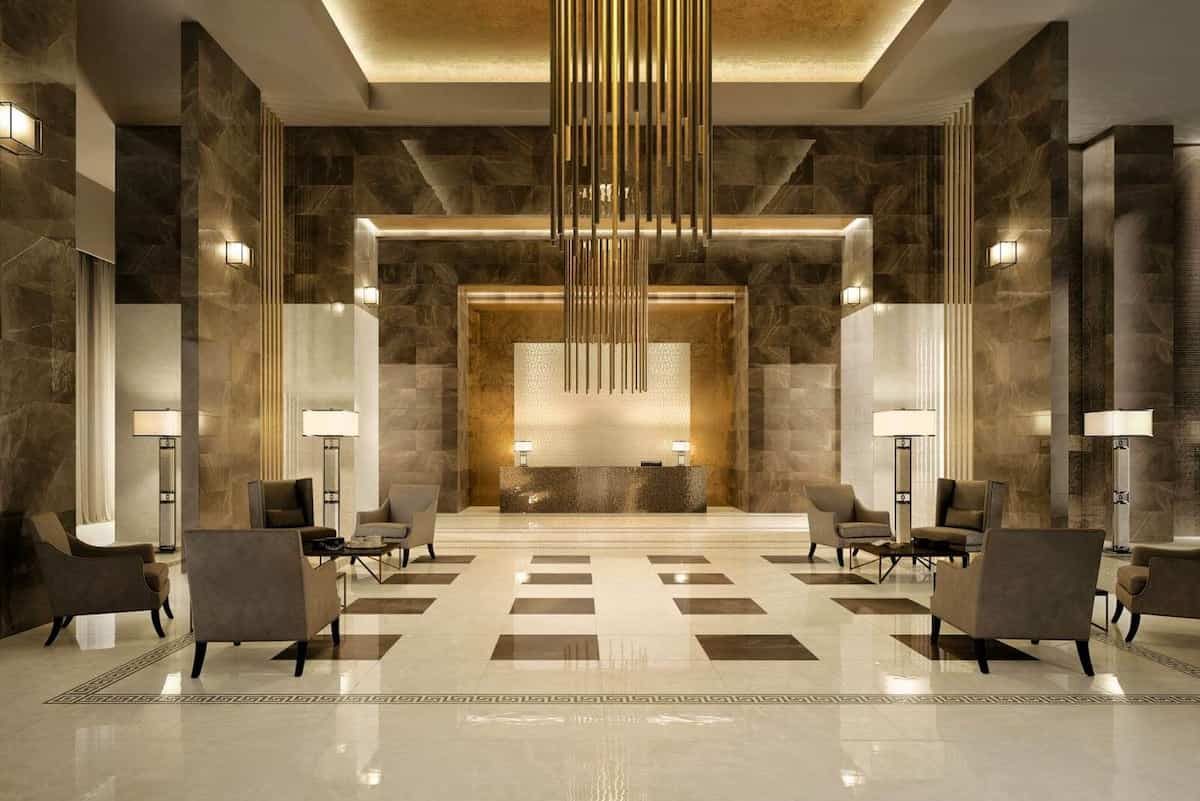
- Durability
A hotel receives a great deal of foot traffic. In addition, since the majority of hotels are open 24 hours a day, it is essential that the surfaces require little maintenance, repairs, and replacement throughout the years. Every time a portion of a hotel is inoperable, it interrupts operations, irritates guests, and maybe creates a mess.
Ceramic tile is exceptionally resistant to scratching, scraping, denting, and staining, even after years of guests hauling heavy luggage and sauntering in and out. Due to its great durability, ceramic tile has the lowest life cycle cost of all accessible flooring options in North America.
- Safety and hygiene
Due to the high volume of visitors and employees entering and exiting the building, cleanliness and security are essential. Ceramic tile is hypoallergenic, fireproof, and slip-resistant, with options available.
- Hygiene
Are you concerned about surfaces that can absorb moisture, develop mildew, and retain odors? Ceramic tile’s ability to produce a watertight installation system and its surface, which is resistant to mold, mildew, and other microorganisms, protect you from these worries.
In addition, the sustainability features of ceramic tile make it an environmentally friendly option. Resistance to Slippage Ceramic tile producers is provided with a five-category “product usage categorization system” to immediately convey regions of use based on the slip resistance qualities of their goods.
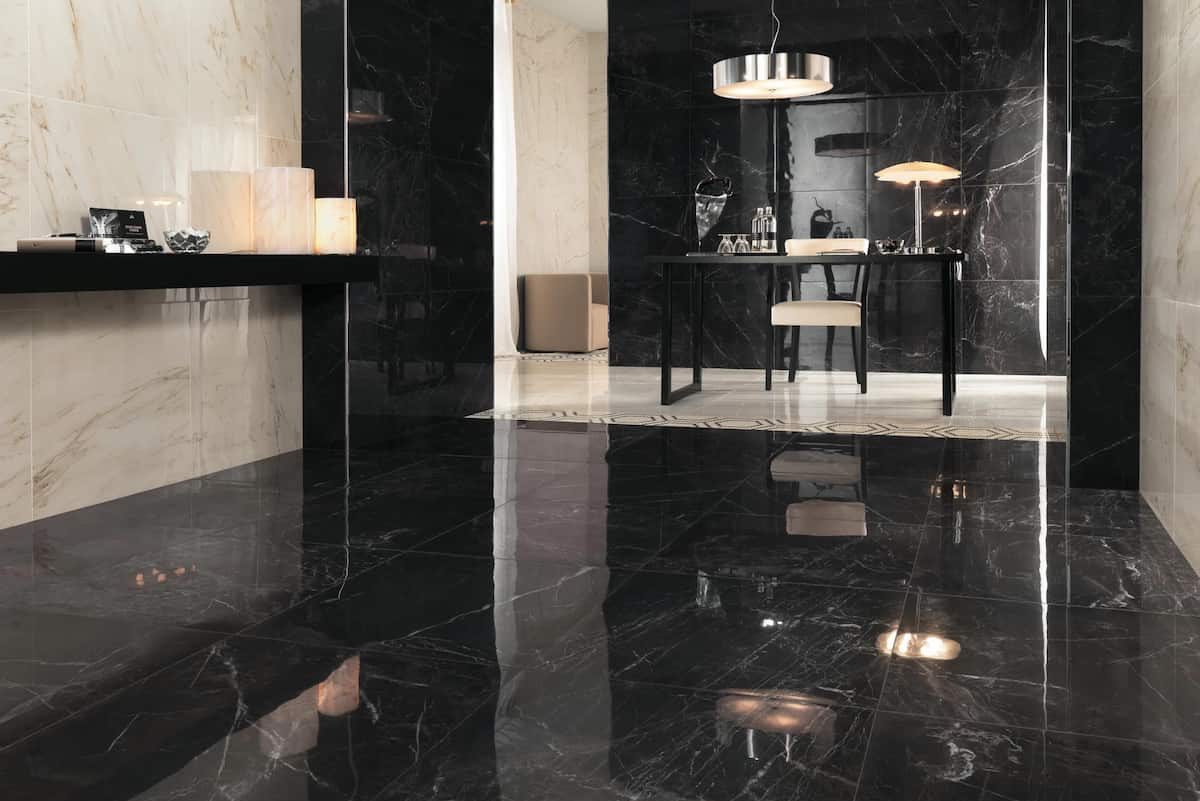
The ANSI A326.3 American National Standard Test Method for Measuring Dynamic Coefficient of Friction of Hard Surface Flooring Materials makes this system viable.
Using this method, designers and architects may select ceramic tiles for a room in an appropriate manner. For an outdoor hotel pool that leads to an outdoor dining area, they may use ceramic tile with EW and O/G ratings.
Understanding the slip-resistant qualities of material is particularly important for selecting the most appropriate product for a certain site due to the diverse functions of numerous hotel spaces and the often-unpredictable behavior of guests.
- Resistance to Fire
Unlike certain other surface materials, noncombustible ceramic tile will not melt in the event of a heat accident.
Moreover, if the event develops into a fire, ceramic tile will not smoke, burn, or emit harmful chemicals, which can help confine the fire. This safety feature is essential for providing a safe and visible escape route in the event of a fire.
- Simple to maintain
Due to its modest care needs and simplicity of cleaning, ceramic tile is the ideal material for hotels responsible for maintaining dozens to hundreds of private, public, large, and small rooms.
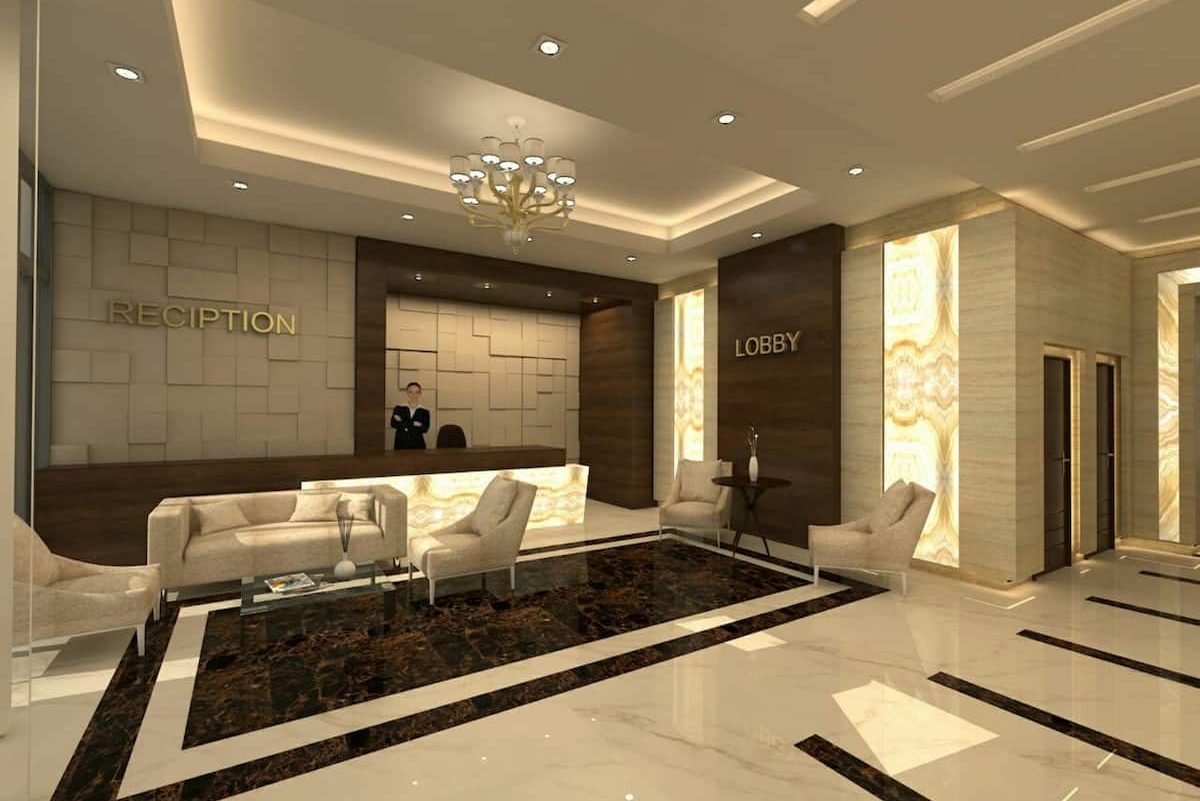
Because it does not attract dust or allergens and is resistant to microbiological and bacterial growth, ceramic tile is simple to maintain by sweeping, wiping, or mopping with only water.
For guests that may be a bit messier, it is possible to clean ceramic tile using a neutral cleaner created specifically for tile and grout.
Because it is resistant to fading, stains, and scratches, ceramic tile requires less maintenance, repairs, and replacement. Surfaces that are attractive and low-maintenance lessen the need for continuing maintenance, allowing normal activities to continue uninterrupted.
- Style
Obviously, ceramic tile is highly versatile and can produce any appearance with a range of design options. In addition to the service quality and branding of a business, the location of a hotel is typically represented.
Ceramic tile is available in several colors, patterns, sizes, shapes, and even textures, allowing for the development of beautiful, customizable designs. The beauty of ceramic tile creates pleasant and unique experiences for tourists.
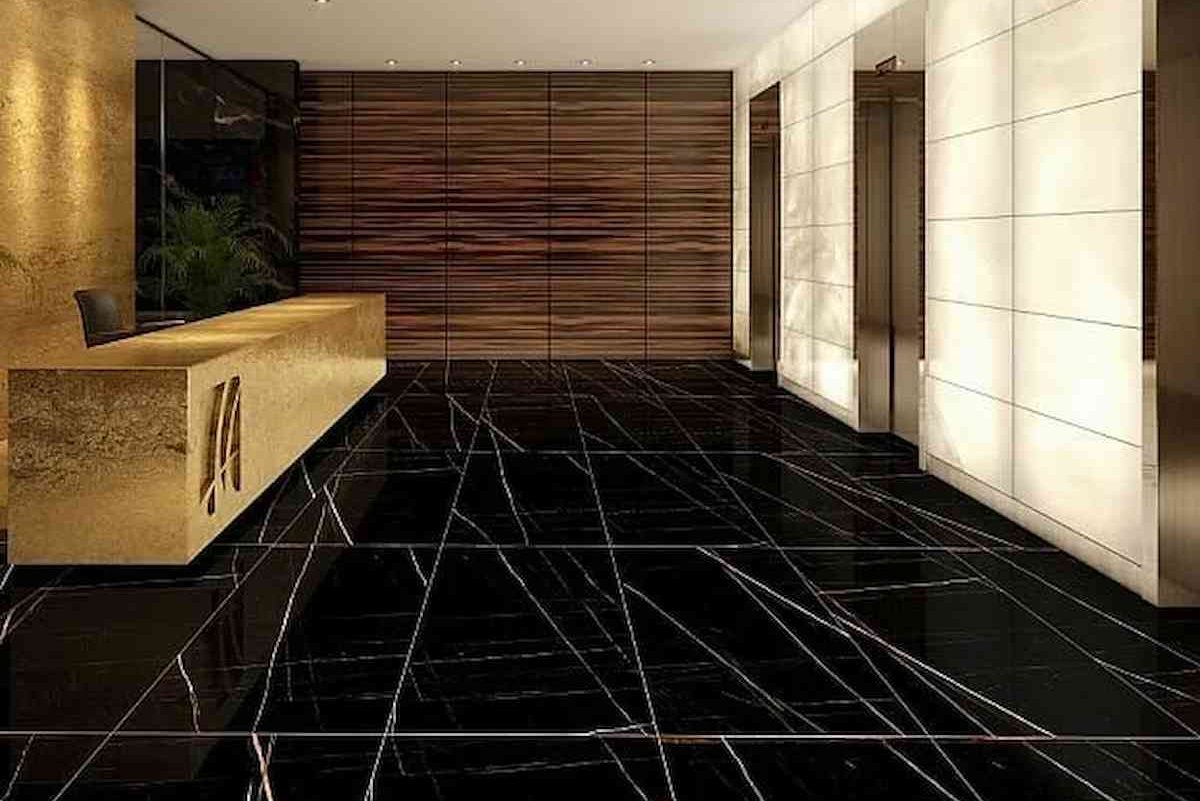
Elegant Hotel ceramic tiles
In every area of the hotel, including the lobby, swimming pool, restaurants, and guest rooms, ceramic tile may be utilized for floors, walls, and bathrooms.
Similarly, ceramic tile may be utilized in any area of a home. Since a guest’s first impression may make or break their stay, hotel lobbies are an elegant place to incorporate design features that wow guests.
In the foyer, ambiance, quality, and elegance are developed. Before approaching the front desk, customers gaze around the lobby.
Ceramic tile offers an excellent opportunity to shine in this setting. The presence of attractive foyer tiles may provide a favorable first impression on guests, hence improving their chance of overall satisfaction and future business.
The variety of ceramic lobby tiles in hotels is practically limitless:
- Ceramic tile flooring is helpful in all regions of a building, regardless of size.
- There are conference rooms, fitness centers, ballrooms, spas, restaurants, breakfast areas, gardens, and rooftop terraces, to mention a few. The tile flooring of a hotel might generate various patterns for specific regions or preserve a uniform appearance with complementary tiles. Additionally, using a single style of flooring makes cleaning easy for employees.
- Ceramic tile will be helpful in high-traffic areas, and less-frequented places might give fantastic opportunities for decorative ceramic tile patterns.
- The floor tiles of a hotel may be the best investment. Attractive choices coupled with easy upkeep for quick turnovers make sound business sense (cents).
- Using tiles in hotel rooms allows you to create environments that are worthy of Instagram hashtags and Google Maps pins, therefore attracting more guests. The floor tiles of a hotel may reflect the establishment’s or location’s unique style, leaving guests with memorable impressions.
- The conventional hotel bathroom is small and efficiently designed to provide everything a guest would need. Ceramic tile enables the design of a hotel bathroom to be extended in unconventional ways from the flooring to the walls, countertop, and shower.
- Ceramic tile, which is available in a range of styles, provides options that are good for damp areas and may be chosen for the slip resistance that is ideal for moist areas. This industrial standard, which specifies usage areas, does not apply to any other surface material.
- The importance of mold- and bacteria-resistant ceramic tile in high-traffic areas that must be kept clean for the safety of every visitor cannot be overstated. Ceramic tile simplifies cleaning for personnel, demonstrating quality and boosting visitors’ faith in your commitment to cleanliness.
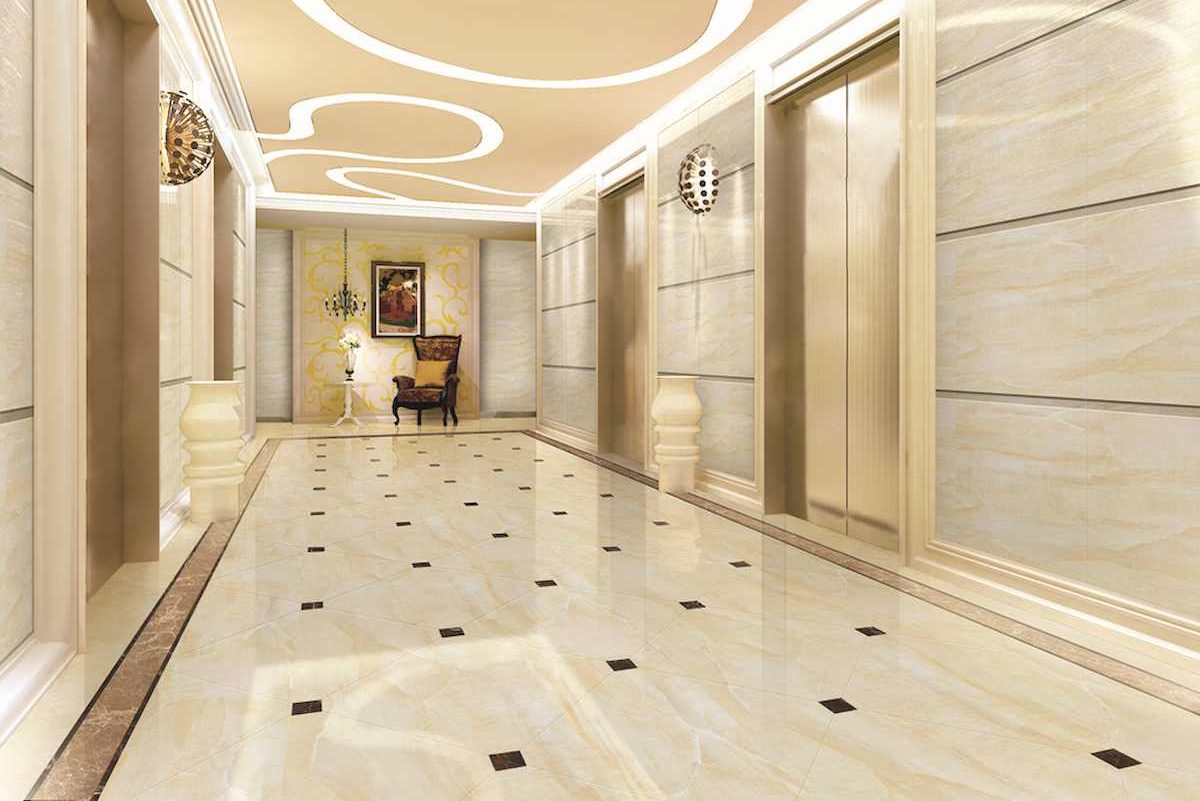
Hotel ceramic tiles design
Here you can find Five Tips for Selecting a hotel ceramic tiles design
- Be aware of your surroundings
Hotel guests go to a city for its advantages, such as its unique culture and ambiance. Utilize this sentiment and deliver more of what visitors anticipated. For example:
- Using biophilic design may be advantageous for hotels situated in wooded or other natural areas.
- With the addition of brilliant colors and patterns, beachfront hotels will appear more airy and joyful.
- Plaster-looks, concrete-looks, and white subway tiles convey an urban feel.
- In areas with a Mediterranean feel, terracotta-appearing tile will blend in beautifully.
- These suggestions are merely the tip of the iceberg in terms of ceramic tile applications. Visitors will be motivated and appreciative of their surroundings if they draw inspiration from their surroundings.
- Coordinate Hotel Tile With Other Elements In Your Space
Due to its utility and aesthetic versatility, ceramic tile may be selected to mix in beautifully with other components in a room.
Combining ceramic tile options with, for instance, statement sculptures, works of art, or architectural aspects may highlight and/or frame distinctive components. It may also be advantageous to combine ceramic tile with other hotel design elements.
For instance, ceramic tile can be used to replicate the look of a headboard without posing any hygiene concerns if cleaning ease and durability concerns prevent you from including headboards into your hotel room’s design. In this room, a headboard-like appearance is accomplished by utilizing two separate shades of tile with a linen texture.
- Patterns of ceramic hotel tiles can help define places.
In order to provide a sense of grandeur and space, open-concept floor plans are prevalent in both residential and commercial structures. Even yet, sectioning off various areas of open-concept rooms can be advantageous, particularly in hotels where a single room serves many functions.
For example, a lobby may have a check-in area, a dining room, a work area, and an elevator bank. To differentiate these areas from one another while maintaining a consistent overall design, you can utilize a variety of tile colors, patterns, and textures.
A path composed of hexagonal tiles leads guests to the front desk.

- Create Customized Hotel Tiles
You wish to provide your guests with a unique experience. Then why not design a unique hotel tile? Due to advancements in tile production, it is now possible to print unique designs on ceramic tile.
Consider producing unique tiles with artwork for the lobby or guest rooms, or printing the hotel’s brand directly on the tiles.
Numerous tile manufacturers provide custom tile printing, making it possible to design patterns like this branded brick-look tile.
- Go Big, Don’t Be Afraid
Utilize ceramic tile to create a unique environment while being certain that it will survive and handle significant foot traffic.
Because ceramic tile is available in a wide range of colors, shapes, sizes, and textures, a tile installation in a hotel may serve as a singular, unforgettable focal point.
This is the genuine definition of “going big”: porcelain tile slabs and panels. The maximum dimensions for porcelain tile panels and slabs are 10 by 15 feet. Their increased surface area serves as a blank canvas for artistic and organic patterns.
Imagine a foyer that is completely coated in marble or a valuable stone for a natural stone and gem look. Ceramic tile can replicate the appearance of any natural stone without the environmental issues or high costs associated with its supply.
Surfaces that possess three dimensions: Surfaces in three dimensions may be utilized to create intricate mosaics, contemporary patterns, and tiles that capture the artisanal craftsmanship of handmade tiles.
A wide variety of durable and aesthetic ceramic tiles are available in our company, contact our sales managers and receive the catalogs.
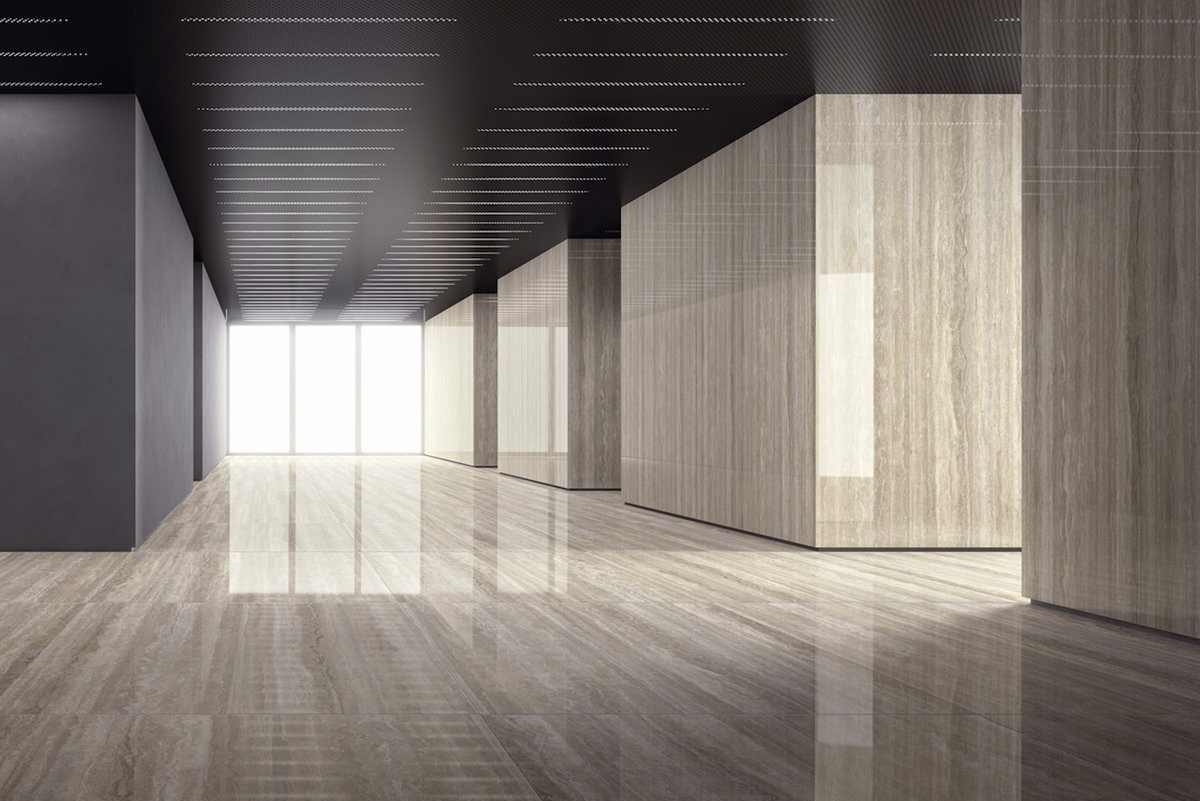











Your comment submitted.